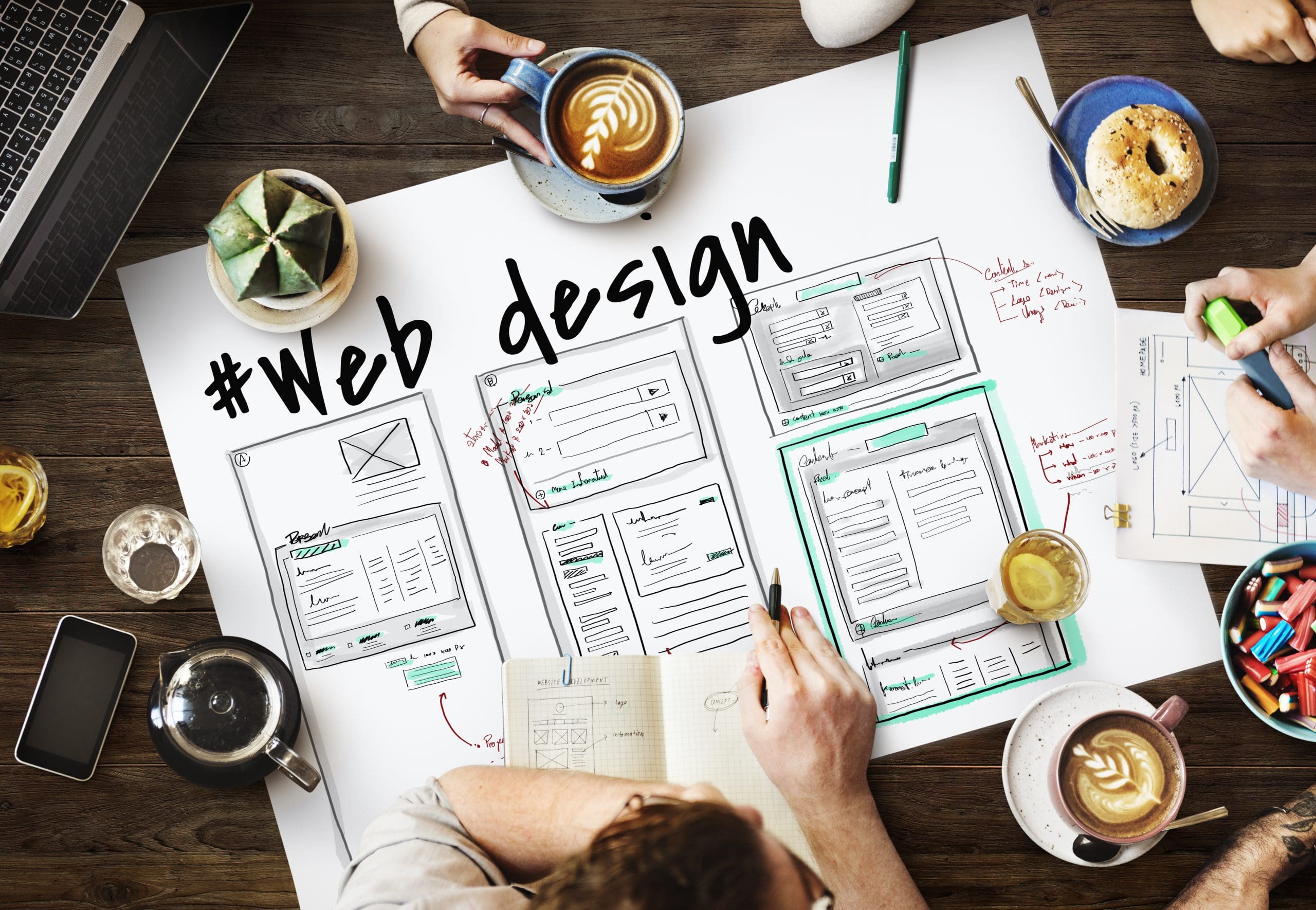Web Design London Ontario Agency for Digital Growth
Web Design London Ontario Agency for Digital Growth
Blog Article
Exactly How to Effectively Integrate Aesthetics and Performance in Website Design
When creating a website, you need to strike an equilibrium between looks and performance. It's not nearly looking good; your design ought to likewise offer a purpose and guide users effectively. By concentrating on simplicity and user-friendly navigation, you can produce an appealing experience. But what elements absolutely improve usability while keeping visual charm? Allow's check out the essential principles that can result in an unified mix of beauty and feature.
Understanding the Significance of Visual Appeals and Functionality
Understanding the equilibrium in between visual appeals and capability is essential for developing a reliable individual experience when you develop an internet site. An aesthetically attractive site grabs attention, yet it's the capability that maintains individuals involved. If your site looks fantastic yet is challenging to browse, visitors will rapidly lose rate of interest and leave.Consider your target audience and what draws them in. You wish to create a design that shows your brand name while making certain simplicity of usage. Structured layouts, instinctive navigation, and clear phone call to activity can enhance both appearances and performance.

Principles of Reliable Web Layout
To create a reliable web style, you require to follow several crucial principles that boost both individual experience and aesthetic allure. Prioritize simplicity; a tidy layout assists customers navigate quickly. Make use of a consistent color design and typography to preserve comprehensibility throughout your site. This promotes knowledge and trust.Next, ensure your layout is receptive. Users gain access to websites on various gadgets, so your layout should adapt flawlessly. Take note of visual pecking order; emphasize important elements with color, positioning, or dimension to direct customers' focus.Finally, include sufficient white area. It stops mess and makes material extra absorbable. Keep in mind, efficient internet style equilibriums visual appeals and performance, so every style option ought to serve a function. By complying with these principles, you'll produce a site that's not only visually attractive however additionally easy to use, eventually maintaining site visitors involved and urging them to return.
Focusing On Individual Experience
When prioritizing customer experience, you'll intend to begin by comprehending what your individuals really need. Simplifying navigating layout can make a massive distinction in exactly how easily they find what they're looking for. Also, boosting aesthetic hierarchy helps lead their focus to the most important components on your website.
Recognizing Individual Needs
Comprehending user needs is necessary for creating an appealing web experience that maintains visitors coming back. To achieve this, you need to determine the objectives and preferences of your target market. Begin by performing individual research, like meetings or surveys, to gather understandings on what users worth most. When interacting with comparable internet sites, pay focus to their pain factors and challenges. This info permits you to tailor your design, ensuring performance lines up with customer expectations. Furthermore, think about creating customer personalities that represent different sectors of your audience, aiding you picture their needs throughout the design process. When you prioritize recognizing individual demands, you produce a web site that not just looks terrific but likewise supplies a seamless, delightful experience that fosters commitment.
Streamlining Navigating Layout

Enhancing Visual Power Structure
A solid visual hierarchy is crucial in guiding customers through your website and guaranteeing they engage with key web content. To accomplish this, use size, spacing, and shade purposefully. Make crucial aspects like headings bigger and bolder than body message, drawing focus quickly. Use contrasting shades to highlight phone call to action, encouraging clicks. In addition, employ ample white room to separate sections, making content absorbable and inviting.Consider the flow of details; organize components rationally, leading users' eyes from one indicate the following. Use aesthetic cues, like arrowheads or lines, to guide attention. By prioritizing aesthetic pecking order, you boost user experience and boost the likelihood of conversions, guaranteeing your website is both visually pleasing and functionally reliable.
Color Theory and Its Influence On Usability
While selecting the right colors for your internet site may appear like a small detail, it considerably affects use and user experience. Shade influences how individuals regard information and can improve or prevent navigating. As an example, contrasting shades can aid important aspects attract attention, making it easier for visitors to discover what they need.Additionally, think about the psychology of shades: blue often inspires count on, while red produces necessity. Recognizing your target market can lead your shade options, ensuring they resonate well.Moreover, constant shade plans assist build brand name identification, making your site a lot more unforgettable. Nevertheless, be cautious-- also several shades can bewilder users. Adhere to a minimal combination that matches your content and maintains clarity.Incorporating accessibility is additionally necessary; confirm your color mixes are friendly for those with visual problems. over here By attentively applying shade concept, you'll enhance use and develop a much more interesting individual experience.
Typography: Balancing Style and Readability
Color selections set the stage for your internet site, however typography plays a just as vital role in boosting individual experience. You want your message to communicate plainly while likewise reflecting your brand's personality. Beginning by choosing typefaces that are not only eye-catching however additionally clear. Sans-serif typefaces commonly work well for electronic screens, as they're less complicated to read at numerous sizes.Maintain a pecking order by utilizing different typeface sizes and weights; this overviews users with your content effortlessly. Consider line spacing and letter spacing; too limited can view frustrate visitors, while also loose can interrupt the circulation. Limit your font options to 2 or three to keep the layout cohesive.Finally, always check your typography across various devices and web browsers. What looks good on one display may out another. Stabilizing design with readability assurances that your message reverberates, keeping your target market notified and engaged.
Responsive Layout: Making Aesthetics Deal With All Tools
To ensure your site looks fantastic on any gadget, you'll need to welcome responsive style principles. This technique guarantees your site adapts to different screen dimensions, offering a perfect customer experience. Begin by utilizing fluid grids and flexible images that scale flawlessly. As opposed to repaired dimensions, go with percentages and family member units, permitting your format to change dynamically.Next, apply media queries in your CSS. These allow you use different styles based on tool qualities, like display size. By doing this, you can keep aesthetic appeal while assuring functionality.Don' t forget touch targets; ensure buttons and links are easy to tap on smaller sized displays. Focus on essential web content, so individuals can conveniently browse your site no matter their gadget. By concentrating on these components, you'll create an engaging, visually appealing experience that fulfills the demands of all users, whether they get on a smart device, desktop computer, or tablet .
Carrying Out Use Screening for Continuous Enhancement
To boost your website design, you need to establish clear use goals that align with individual needs. By conducting user examinations, you can gather valuable comments on just how actual people communicate with your website. Analyzing these results will aid you make notified improvements and develop a much more effective individual experience.
Specifying Usability Goals
While aesthetic appeals can attract individuals in, defining usability goals is crucial for guaranteeing their experience remains satisfying and smooth. Beginning by recognizing what you desire customers to attain on your site (website design london Ontario). Consider their needs, behaviors, and tasks. Are they seeking info, purchasing, or signing up for a newsletter? Establish clear benchmarks to measure success, like job conclusion rates or time on job. Focus on instinctive navigation, accessible material, and receptive design to boost functionality. Routinely take another look at these objectives as customer assumptions advance. By defining usability objectives, you create a structure for evaluating and improving your internet site's efficiency. This concentrate on usability not just improves customer complete satisfaction however likewise strengthens the overall efficiency of your style
Performing Customer Tests
Performing user tests is necessary for improving your website and ensuring it fulfills your audience's needs. Beginning by determining your target customers and producing a test strategy that outlines your goals. Use a mix of measurable and qualitative methods, such as surveys, meetings, and task-based monitorings, to collect thorough comments. Invite participants to browse your website while you observe their interactions and note any kind of problems they run into. Urge open discussion to record their thoughts and feelings about the style and functionality. Keep sessions short and concentrated, ensuring you cover vital areas without overwhelming customers. Make certain to record all findings, as this info will certainly be very useful for making informed style decisions that enhance both aesthetic appeals and usability.
Analyzing Test Outcomes
How can you successfully examine the outcomes of your functionality tests to drive continuous improvement? Start by classifying responses into common motifs. Seek patterns in customer behavior that highlight pain points or areas for enhancement. Usage quantitative data, like job completion rates and time on task, to gauge functionality objectively. Do not neglect to think about qualitative understandings from user remarks; they frequently disclose underlying issues that numbers can't show. Prioritize one of the most impactful searchings for and develop workable things for your style group. Bear in mind, it's about iterating-- execute modifications, then examination once more. This cycle of testing, evaluating, and refining assists you equilibrium aesthetic appeals and functionality, guaranteeing your website meets customer needs efficiently while keeping aesthetic appeal.
Often Asked Questions
How Do I Select the Right Color Combination for My Internet site?
To select the right color scheme for your web site, consider your brand name's character, target market, and psychological impact (website design london Ontario). Usage color psychology, develop harmony, and guarantee readability. Test combinations to see what reverberates finest with visitors
What Tools Can Assist With Website Design Visual Appeals and Functionality?
You can utilize tools like Adobe XD, Figma, and Map out to improve your internet layout's appearances Bonuses and capability. These systems offer instinctive user interfaces, partnership functions, and pre-made design templates to simplify your innovative process and improve your designs.
Exactly How Can I Integrate Animations Without Compromising Functionality?
To include computer animations without endangering performance, focus on subtle effects that enhance user experience. Use CSS animations for smoother communications, warranty fast load times, and test on different devices to keep efficiency while adding visual appeal.
What Prevail Errors to Avoid in Web Layout Visual Appeals?
When making, avoid cluttered designs, bad color selections, and inconsistent fonts. Do not ignore mobile responsiveness, as it can alienate users. Confirm your style lines up with your brand, developing a seamless experience that involves visitors efficiently.
Exactly how Often Should I Update My Internet site's Style for Optimal Aesthetic Appeals?
You should upgrade your website's style every 1-2 years to stay up to date with patterns and maintain suitable aesthetic appeals. Consistently renewing visuals helps engage site visitors and guarantees your website continues to be user-friendly and attractive. When you design a site, understanding the balance between looks and performance is crucial for creating a reliable user experience. To develop a reliable web style, you need to adhere to a number of vital principles that boost both user experience and visual allure. Users accessibility internet sites on various devices, so your layout must adapt seamlessly. When focusing on customer experience, you'll want to start by understanding what your users absolutely require. Begin by performing user study, like surveys or interviews, to gather insights on what customers value most.
Report this page